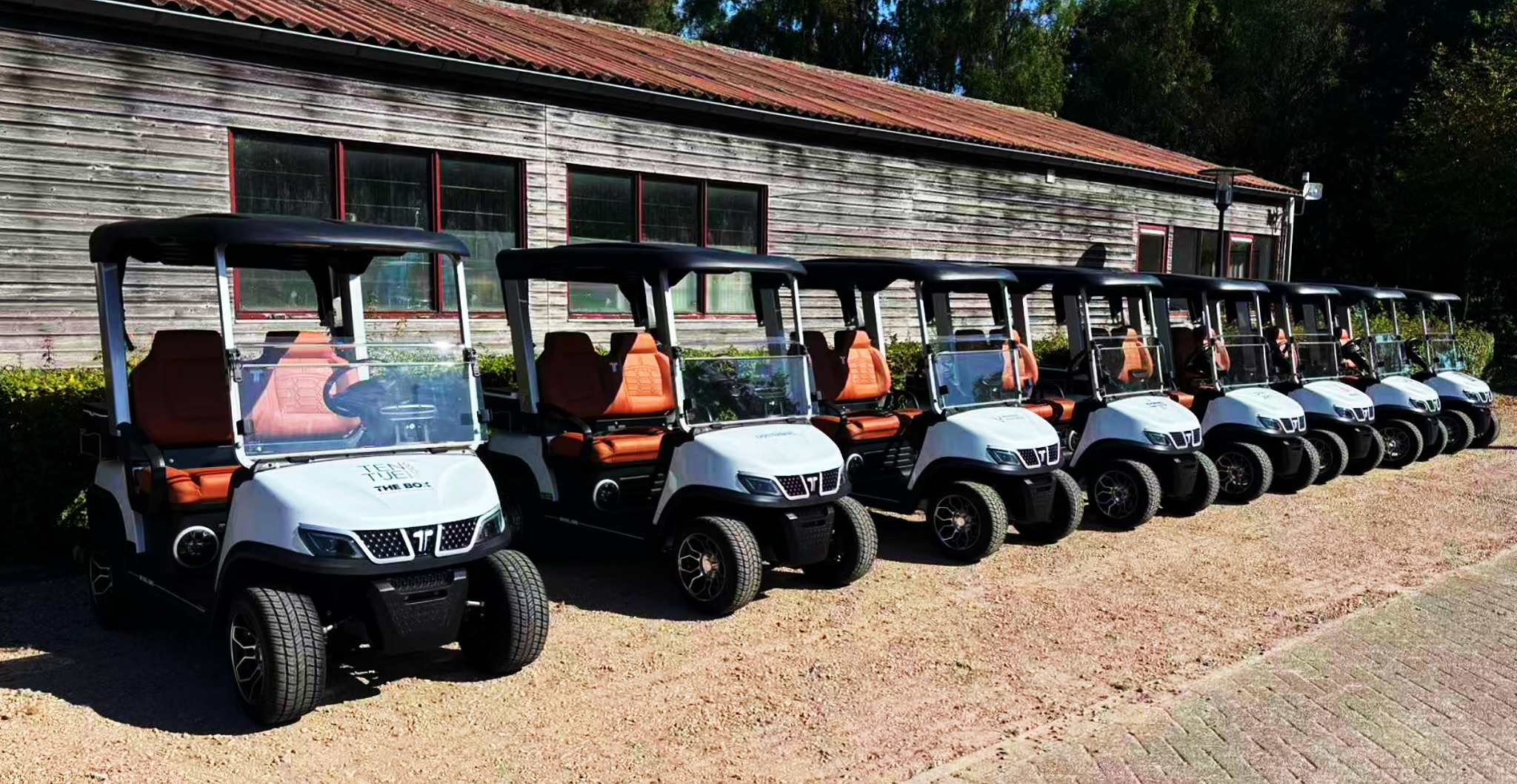In the new era of sustainable operations and efficient management, golf courses are facing the dual need to upgrade their energy structure and service experience. Tara offers more than just electric golf carts; it provides a layered solution encompassing the process of upgrading existing golf carts, intelligent management, and upgrading to new golf carts. This approach helps courses reduce their carbon footprint while improving operational efficiency and member experience.

Ⅰ. Why Turn to Electric Fleets?
1. Environmental and Cost Factors
With increasing environmental regulations and public awareness, the emissions, noise, and maintenance costs of fuel-powered golf carts have become an invisible burden on long-term golf course operations. With their low emissions, low noise, and reduced daily energy consumption, electric golf carts are the preferred choice for both environmental protection and cost control. For most golf courses, electrification is not a short-term investment but a superior strategic decision for long-term reductions in total cost of ownership (TCO).
2. Operational Efficiency and Player Experience
Electric vehicles’ stable power output and reduced maintenance frequency help increase vehicle availability. Furthermore, their low noise and vibration provide a quieter, more comfortable experience for golfers, directly impacting course service quality and member satisfaction.
II. Overview of Tara’s Tiered Transformation Approach
Tara offers three complementary paths to suit courses with different budgets and strategic positioning: lightweight upgrades, hybrid deployment, and new cart purchases.
1. Lightweight Upgrade (Old Cart Retrofit)
Infusing the existing fleet with electric and intelligent capabilities through modular components, focusing on “low cost, fast results, and cross-brand compatibility.” This approach is suitable for budget-conscious clubs or those seeking a phased approach.
The key benefits of this approach include: extending asset life and reducing one-time capital expenditures; rapidly reducing operating energy consumption and maintenance costs; providing significant short-term returns and paving the way for subsequent upgrades.
2. Hybrid Deployment (Gradual Replacement)
Courses can initially deploy new carts in high-traffic or image-critical areas, while retaining retrofitted vehicles in other areas, creating an efficient operational structure that combines both new and existing vehicles. This solution can: maintain stable cash flow while improving local service quality; and optimize replacement timing and payback period estimates through data comparison.
3. Comprehensive Replacement
For resorts and membership clubs seeking a high-end experience and long-term brand value, Tara provides an integrated, factory-installed smart fleet and comprehensive after-sales service, emphasizing long-term profitability and brand consistency. Full customization is supported, giving the club a fresh, new look.
III. Beyond Electrification, Tara’s Three Design Innovations
1. Energy System Optimization: Maintenance-Free, High-Efficiency Batteries
Tara utilizes high-density lithium-ion batteries with a battery management system (BMS), delivering significant advantages in range, charging efficiency, and cycle life. Furthermore, an eight-year factory-installed battery warranty further enhances purchase value.
2. Cart Body and Materials: Optimizing Lightweight and Durability
Through structural optimization and the use of lightweight materials, Tara reduces vehicle weight and improves energy efficiency. Weather-resistant, low-maintenance materials are also used to extend the vehicle’s lifespan and reduce long-term replacement costs.
3. Service System and Data Platform: From Operations and Maintenance to Strategic Decision-Making
Tara not only delivers vehicles but also provides training, spare parts, and data analysis services. If equipped with the optional GPS fleet management system, fleet operational data will be integrated into a visualization platform, allowing managers to formulate more effective operational strategies based on charging cycles, usage frequency, and maintenance records.
IV. Implementation Path and Practical Recommendations
1. Pilot First, Data-Driven Decision-Making
It is recommended that stadiums first pilot retrofits or deploy new vehicles on a subset of high-use vehicles, collecting data on energy consumption, utilization, and customer reviews. This will allow them to use real-world data to evaluate the project’s economic viability and user experience.
2. Phased Investment and Optimized Payback Period
Through a hybrid deployment and phased replacement strategy, stadiums can gradually achieve full electrification while maintaining budgets, shortening their payback period and reducing initial capital pressure.
3. Employee Training and Maintenance System Establishment
Vehicle technology upgrades must be accompanied by improvements in operational and maintenance capabilities. Tara provides technical training and spare parts support to ensure stable fleet operation and effectively minimize downtime after the retrofit.
V. Economic and Brand Returns: Why is the investment worthwhile?
1. Direct Economic Benefits
Electricity costs are typically lower than fuel costs, significantly reducing maintenance frequency and replacement cycles, resulting in more competitive long-term operating expenses (OPEX).
2. Indirect Brand Value
A modern electric fleet enhances the golf course’s image and customer experience, facilitating member recruitment and brand promotion. With environmental protection becoming a key factor in customer decision-making, a green fleet also becomes a key competitive differentiation asset.
Ⅵ. Empowering Golf Courses
Tara’s electrification and fleet innovations are not just technological advancements; they offer a practical operational transformation path. Through a flexible combination of three levels: lightweight upgrades, hybrid deployment, and new golf cart upgrades, golf courses can achieve a dual transformation to green and smart golf at manageable costs. In the context of global sustainable development, seizing the opportunities of electrification not only saves golf courses money but also lays a solid foundation for their future competitiveness and brand value. Tara is committed to working with more golf courses to transform every cart into a vehicle that delivers green operations and an exceptional experience.
Post time: Oct-17-2025






